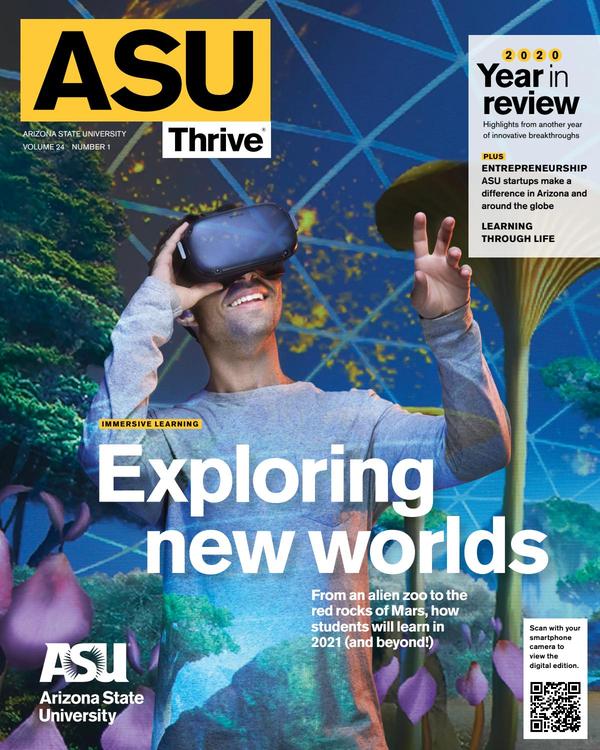January 27, 2022
Local lawmakers get firsthand glimpse into faculty and student work impacting the future of state and globe
Faculty and student work may start in the classrooms at Arizona State University, but the commitment to innovation reaches far beyond brick and mortar buildings, spanning a variety of multidisciplinary fields.
Advances in medicine and engineering, space exploration, using dog DNA to solve crimes and reviving civic studies in K–12 classrooms were just some of the topics and projects on display during ASU Day at the Capitol on Jan. 25.
The annual event gives local and state lawmakers an up-close glimpse into that innovation. Dozens of academic units, faculty and students from across ASU showcased world-class research and ingenuity in partnerships and projects that will power not only the state’s future, but the global economy and the future of learning.
“As a two-time graduate, first-generation student and current legislator, I am filled with so much pride for everything that Arizona State University does,” said Rep. Marcelino Quiñonez. “It’s been the number one university in innovation for seven years and counting. The NewSpace exploration and this idea of how space works and what’s our relationship with it, I think is incredible,” he said.

Arizona Rep. Marcelino Quiñonez chats with Christine Wilkinson, ASU Alumni Association president and senior vice president and secretary of the university, outside the state Capitol near downtown Phoenix on Tuesday, Jan. 25, as part of ASU Day at the Capitol. Photo by Charlie Leight/ASU News
The School of Earth and Space
Exploration and ASU NewSpace were there representing their advances in space exploration. Last year’s Feb. 18 landing of NASA's Perseverance rover on Mars is just one example of ASU’s work in space. The rover — which carries the ASU-led mast-mounted camera system "Mastcam-Z" — will help scientists learn more about water that may have once existed within Mars’ Jezero Crater.Back down on Earth, another area of exploration beyond borders is within ASU’s School of Transborder Studies, where faculty like Associate Professor Francisco Lara-Valencia study socio-environmental vulnerability, urban health, regional development, binational planning and the role of community networks on sustainable development at the U.S.-Mexico border (specifically along the Arizona-Nogales border) and several other borderlands in South America.
“We need to develop economically and socially, yes of course,” Lara-Valencia said. “But the issue is also environmental, on both sides. Our team is developing a system of indicators with data from both sides of the border that track how much progress has been made in the area in terms of income, poverty, education and accessibility to water,” he said.
The strategic plan Lara-Valencia and his colleagues are developing is bilingual, English and Spanish.
Another partnership among the humanities represented at the event involved the School of Civic and Economic Thought and Leadership and the Center for Political Thought and Leadership. These institutions partner to bring civic debates to campus and civic education back into K–12 classrooms.




